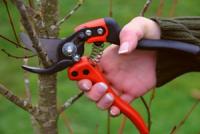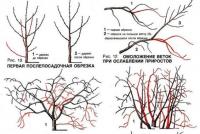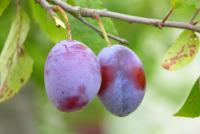Which family are vegetables. Classification of vegetable crops
Vegetable crops - This is a herbaceous plant grown to obtain heads, root crops, bulbs, leaves, fruits. 120 kinds of vegetable plants are cultivated. The most common of them belong to 10 families: crucifers - cabbage, rutabaga, turnip, radish, radish, horseradish, watercress; umbrella-carrots, parsley, parsnip, celery, dill; pumpkin - cucumber, pumpkin, melon, watermelon; solanaceous - tomato, pepper, eggplant, physalis; legumes - peas, beans, beans; lily - onion, garlic, asparagus; Asteraceae - salad, chicory, artichoke, tarragon; maryovye - beets, spinach; buckwheat - rhubarb, sorrel; cereals - corn.
There are annual, biennial and perennial vegetable crops.
Annuals complete the life cycle (from seed to seed) in one year. Among them are plants of the family Solanaceae, legumes and pumpkin, as well as radishes, dill, lettuce, spinach, Peking and cauliflower.
Biennials in the first year of life form vegetative organs - bulbs, roots, cabbages, etc., and in the second - seeds. These include: onion and leek, garlic, root vegetables (except radish), cabbage (except
color and Beijing), artichoke. By winter, they lose their leaves, and often the roots, retaining only the organs in which nutrients are stored.
Perennial vegetable plants - This is rhubarb, sorrel, asparagus, horseradish, tarragon, onion-batun, chives, multi-tiered onions. In the autumn, all the above-ground part of them dies off, and the roots, in which the nutrient reserves are laid, are preserved until the spring of next year.
Every year in spring these plants resume their growth.
Vegetables - the main source of vitamins, they contain important nutrients: proteins, fats and carbohydrates. But due to the high water content (70-95%) they are low-calorie. Taste and pleasant smell of vegetables depend on various combinations of Sugars, organic acids, aromatic and mineral substances contained in them. Sugar in vegetables during fermentation and pickling is fermented, forming lactic acid, which protects them from rotting. Dill, parsley, garlic, onion, radish, horseradish contain many phytoncides-substances with bactericidal properties. Mineral salts contained in vegetables, enhance the physiological processes in the human body. The Institute of Nutrition of the Academy of Medical Sciences of the USSR has established an average annual consumption rate of vegetables of 122 kg per person.
Soviet breeders created more than 700 varieties and hybrids of vegetable crops, which are zoned in various climatic zones of the country.
The homeland of most vegetable crops is the country of warm, tropical and subtropical climate. Therefore, many of them are thermophilic, demanding on soil moisture. But some species are cold-resistant, which makes it possible to grow them in the north, in the central regions and in the winter in subtropical regions. Seeds of some when underwintering begin to germinate already under the snow at a temperature of about 0 °, and others - at a temperature not lower than 13 -14 °. Some plants tolerate hot and dry weather, and in the case of wet, rainy die, others, on the contrary, do not tolerate heat.
All this testifies to a wide variety. biological features vegetable crops. Therefore, to obtain a high and high-quality crop of vegetables, it is necessary to create a set of conditions that meet the needs of vegetable plants.
The best time for tillage is autumn. It is necessary to clear the soil from the rhizomes of perennial weeds, larvae of the May beetle. Careful and deep (with a full bayonet of shovels) treatment allows moisture to easily penetrate into the soil and accumulate in it. In spring, it is enough to dig up the soil by 15-20 cm. At low, damp places, you need to arrange ridges or ridges.
Vegetable crops respond very well to fertilizers, especially on podzolic and gray forest soils. The most common organic fertilizers are manure (preferably rotted), fecal matter, peat, bird droppings. Horse manure is made at the rate of 6-12 kg per 1 m2, cattle manure-7-14 kg, manure-10-20 kg, feces-4-8 kg, peat-10-20 kg, leaves parted, 10- 20 kg. Feces are used only in blends.
Vegetables - an extremely capacious concept that has very blurry fuzzy boundaries. The most acceptable definition of vegetables was given by Professor V.I. Edelshtein, who called grassy vegetables as vegetables, cultivated for the sake of their juicy parts, eaten by humans. In the vast territory of our country, according to various sources, up to 40 types of vegetable crops are grown, 23 of them are widespread, such as: white cabbage, Beijing, cauliflower, beet, turnip, rutabaga, carrot, radish, radish, cucumber, pumpkin , watermelon, melon, tomato, pepper, eggplant, onion, garlic, celery, parsley, dill, salad. Other types of vegetables are also represented, but are not widely cultivated.
In food use a variety of plant parts; on the basis of the use of one or another part of vegetable plants are divided into the following groups.
Fruit (tomato, cucumber, eggplant, pepper, zucchini, squash, zucchini, croutons, pumpkin, watermelon, melon, artichoke, physalis, peas, beans, beans, soybeans, sugar corn, etc.).
Root and tuber crops (carrots, swede, table beet, radish, radish, turnip, tuberous celery, parsley root, sweet potato, Jerusalem artichoke, oat root, parsnip, scorzonera, etc.).
Onions (onions, shallots, leeks, onion-slick, fragrant onions, multi-tiered onions, onions-batun, chives, wild-growing onions, garlic).
Leafy, including cabbage (white cabbage, red cabbage, Chinese, leafy, Savoy, Brussels, Peking, kohlrabi, color, broccoli).
Greens (lettuce, chicory lettuce (witluff, endive), escariol, spinach, sorrel, rhubarb, purslane, asparagus, amaranth, watercress, watercress, garden quinoa, leaf mustard, beet leaf (chard), borage, dandelion , asparagus, dill).
Prynovovusovye (anise, cupola, basil, lovage, hyssop, snakehead, cress, marjoram, tarragon, horseradish, katran, coriander, lemon balm, mint, sage, savory, cumin, thyme, rosemary, root, nigella, fennel, etc. ).
However, this division is rather arbitrary. Some fruit crops produce ripe fruit (tomato, eggplant, pepper, pumpkin), while others have unripe fruit (zucchini, squash, cucumber, peas, and beans on a spatula). In leafy vegetable crops, different parts and organs of the plant are used, not just the leaves, as the name suggests. Thus, in cabbage and Brussels sprouts, cabbage and tsikornogo lettuce (witlufa) they eat sprouted buds, and broccoli and cauliflower have unopened inflorescences. Actually leaves are used in Peking and Savoy cabbage, leaf lettuce, and beetroot (chard), sorrel, spinach. and green onions, as well as a number of spicy aromatic crops such as parsley, celery, dill, basil, tarragon, marjoram, lovage, watercress, mustard leaf, many of which according to this classification belong to another group of vegetable cult p. In such plants as fennel, young beets, celery, rhubarb, leaf stalks are used as food. In a large group of plants, called root vegetables, overgrown roots are used, and in kohlrabi cabbage, an overgrown stalk, resembling a root crop, is used. Young shoots and sprouts can also be used as vegetables, for example, in asparagus and portulaca, as well as various tuber-like formations on the roots and rhizomes of plants, such as Jerusalem artichoke, sweet potato, stachis. All this shows a certain imperfection of this division of vegetable crops into groups. The other classification system for vegetable plants is based on their belonging to various botanical families.This classification systematizes a huge variety of vegetables and helps to navigate in related crops, for example, when planning crop rotation, when cultures of one botanical family should not be grown consistently on one plot of land. Thus, the group of root crops includes vegetable plants of three botanical families: umbellate, or celery (carrots, parsnips, parsley, celery), cruciferous, or cabbage (rutabaga, turnips, radishes, radishes), and hawks (beetroot). According to the duration of the life cycle, all vegetable plants are divided into annuals, biennials and perennials.
Annual vegetable plants go through their life cycle from sowing seeds to forming new seeds in one year. The vital processes of annual plants are determined by three main periods: seed germination and the emergence of cotyledonary leaves, increased growth of vegetative organs and green mass of plants, the formation of reproductive organs up to the full maturation of the plant. After full implementation of the life cycle, the plant dies out. Annual vegetable crops include plants of the fruit group: tomato, cucumber, eggplant, pepper, zucchini, squash, zucchini, pumpkin, watermelon, melon, artichoke, as well as lettuce, spinach, leaf mustard, watercress, dill, radish, color and Chinese cabbage, broccoli, some spicy flavoring cultures.
Biennial vegetable plants in the first year of life form a rosette of leaves and productive vegetative organs, such as roots, tubers, cabbages, and bulbs. The formation of fruits and seeds occurs only in the second year of plant life, when they form flowering shoots, on which fruits with seeds develop to full maturity. The life cycle of biennial plants is interrupted by a period of physiological dormancy upon the occurrence of adverse conditions for growth and development during maturation. During the period of such forced rest, the rearrangement of nutrients occurs, and with the onset of the new vegetation period, the plant spends its vital resources on the formation of fruits and seeds. Usually
Continuing the theme of the ornamental garden, today we will talk about the decorative placement of vegetable plants. Possibilities of placement of garden plants depend, first of all, on the area of the site, its relief, general design and are determined by the diversity of the range. Its range is very wide and includes flowering, decorative, beautiful, high, and low plantsforming carpets and, on the contrary, climbing high upwards on supports, drought-resistant and growing in water, sun-loving and preferring exclusively shady places, with a short growing season (ephemeroids) and evergreen, etc. Let us consider in more detail the main decorative properties of vegetable plants.
Groups of ornamental vegetable plants by life expectancy
The period of decorativeness of vegetables is determined primarily by the life cycle and the phase of plant development. Among the traditional vegetable crops and vegetables are wild plants, most of which are herbaceous plants, there are annuals, biennials and perennials.Annual plants include plants that bloom during the same growing season, form mature seeds and die. This group includes the majority of traditionally grown vegetables: cucumber, tomato, pepper, pumpkin, zucchini, squash, dill, beans, watermelon, cantaloupe, etc.
Annual vegetable plants:
amaranth, anguria, anise, watermelon, basil, okra, marigolds, stone-shredded females, beninkaza, beans, borage, water chestnut, mustard, melon, Moldavian serpentine head, zucchini, calendula, Chinese cabbage, K. pekinskaya, chyrocorye, cabbage, cabbage, calendula, Chinese cabbage, K. pekinskaya, ch. coriander, watercress, crouton, maize, lagenaria, garden quinoa, luffa, samoseyka, corn capitate, momordika, cucumber, squash, pepper, sunflower, purslane, radish, summer radish, lettuce, tomato, pumpkin, dill, bean common, glutenopod physalis, f. pubescent, chrysanthemum, cyclantera, chicory salad, savory garden, Chernushka, spinach.
Biennials include plants whose life cycle lasts two years. In the first year, a shortened stem with leaves develops, most often in the form of a rosette. In the second year, a flowering sprout grows, the plants bloom, bear fruit and, forming mature seeds, die off. The biennials include: parsley, celery, common goat, chicory salad, etc. Many biennial plants are grown as annuals, harvesting in the first year of their lives (cabbage, carrots, parsnips, beets, etc.), and if necessary, get seeds, their continue to grow in the second year.
Biennial vegetable plants:
tuberiferous butenbill, common goatskin, half-flowered mullefruit, forest kupyr, oslinnik biennial, parsley, radish, winter radish, turnip, celery, cumin, fennel, physalis ordinary, salad chicory, garlic, spinach.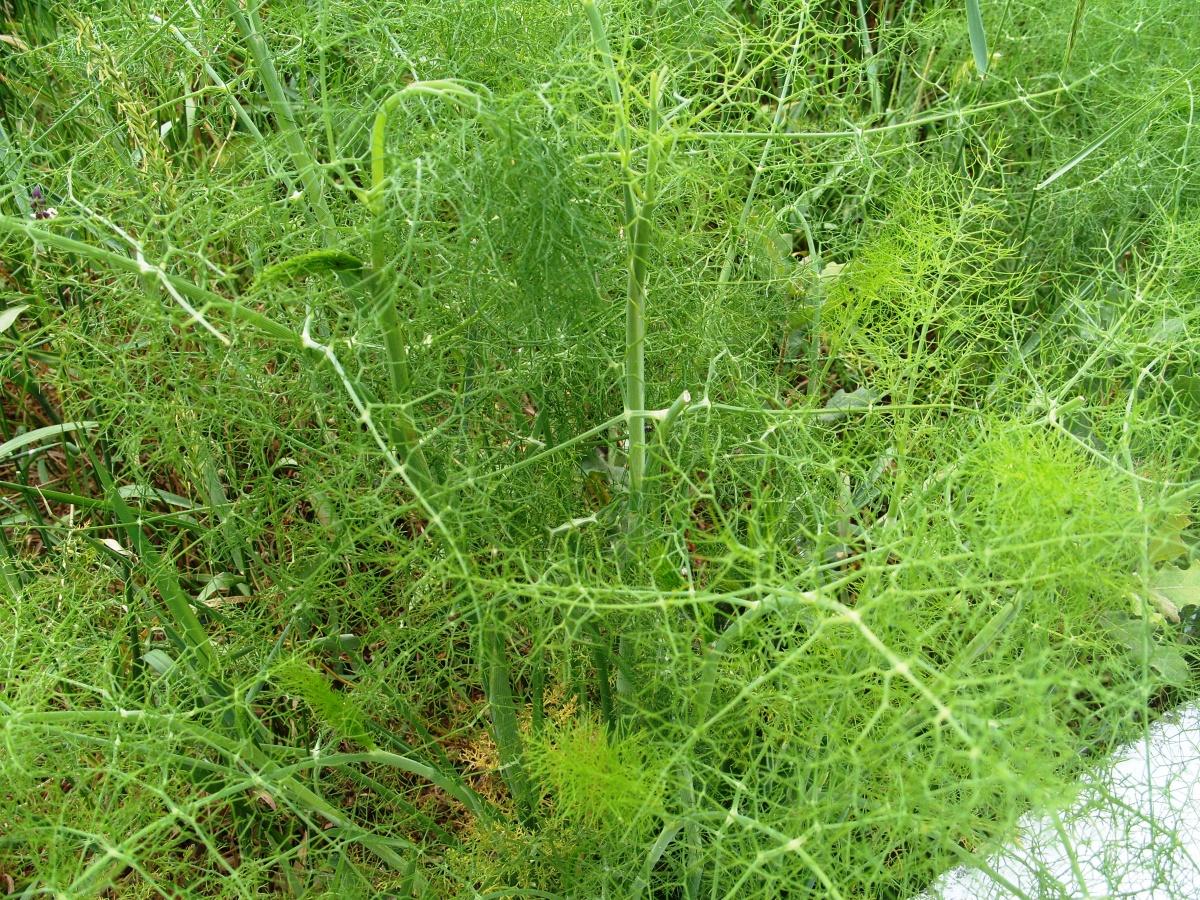
Biennial vegetable plants grown as annuals:
rutabaga, daikon, cabbages, carrots, parsnips, table beets, p. chard, fennel, onion, garlic.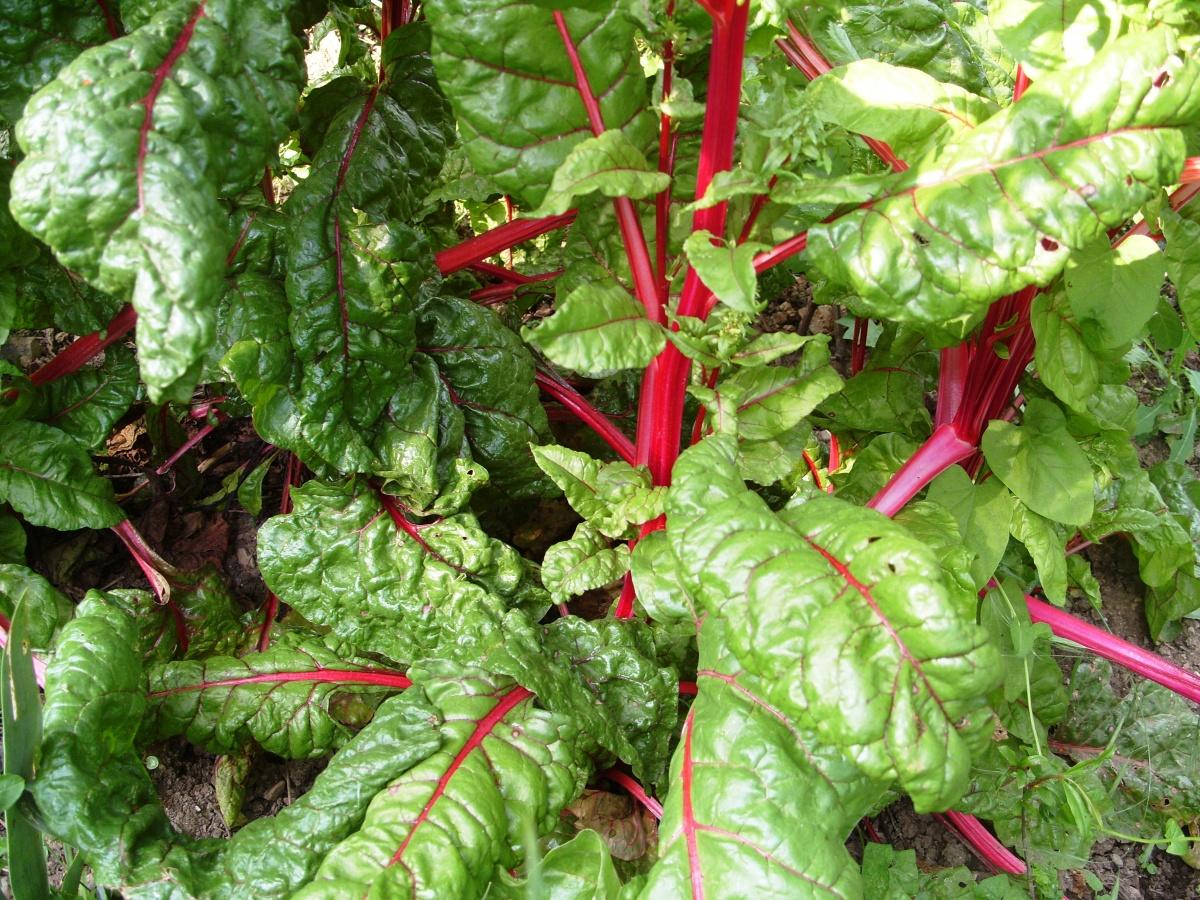
Perennials include plants whose life expectancy is more than two (many) years. At the same time, every winter, the aerial part of them dies off, and in the spring, flowering shoots from the underground organs, on which there are renewed buds, flowering, the plants bloom, bear fruit, and die again in winter. The first flowering of these plants begins with the second or third year of life, or later, if the plants were grown from seeds. This should be taken into account when composing the compositions and not focusing on the decorativeness of the flowers or fruits of the vegetable perennials in the first years of life. The vast majority of perennials among vegetable plants are various types of onions, some spicy-flavoring plants, wild plants.
Perennial vegetable plants:
calamus, marshmallow, artichoke, badan, hogrichevik, budra, small basilus, Veronika, large rooting geranium, yellow gentian, Russian gorzey, river gravilat, yellow goose onions, tall man, anchor Germanic marsh marsh marigold, lake reed, balsamic canuper, Tatar quatra, common oxis, creeping clover, bell, catnip, chemotherapist, white waterlily, bunt, forest kupyr Goaty fennel, Anzur onion, L. Roundhead, L. Long-fresh, L. Pobedy, L. Reeking, L. Hard, L. Angled, L. Shalot, L. Skorot (chives), lovage, perennial daisy, mother- coltsfoot, medunitsa medicinal, lemon balm, fragrant myrrh, young roofing, duckweed, mint, common bird, common bracken, common stonecrop, red fenugreek, primrose, tansy, evading peony, tarragon wormwood, forest mallow, prymma, prymma, peony deviating, tarragon wormwood, forest mallow, prymma, prymma, peony deviating, tarragon wormwood, forest mallow, prymma, prymma, peony deviating, tarragon wormwood, forest mallow, prymma, prymma, peony deviating, tarragon wormwood, forest mallow, prymma, prymma, peony deviating, tarragon wormwood, forest mallow, pvarna, pryvma, pivma, pion , Rhodiola rosea, core, Serpuha crowned, asparagus, arrowhead, susak umbrella oh, syt edible, tladiant, Jerusalem artichoke, common cane, yarrow, cry, fennel, hamenerion Echinacea purpurea.

